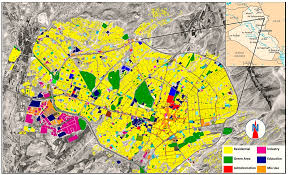New Insights into Early Urbanization in Northwestern Arabia

A groundbreaking study published in *PLOS ONE* on October 30, 2024, sheds light on the transitional stage of urbanization in northern Arabia during the third to second millennium BCE. Led by Guillaume Charloux from the French National Center for Scientific Research in Paris, the research team explores the development of large urban settlements, a significant milestone in the evolution of human civilization.
Understanding urbanization in northern Arabia has posed challenges due to a lack of well-preserved archaeological sites, especially when compared to better-documented regions like the Levant and Mesopotamia. However, recent excavations have revealed exceptional sites that offer new insights into the early stages of urbanization in this region. In their study, Charloux and colleagues present a detailed analysis of the Bronze Age town of al-Natah, located in Medinah province and occupied from around 2400 to 1500 BCE. This ancient town spanned approximately 1.5 hectares, featuring a central district and a nearby residential area surrounded by protective ramparts. The presence of a necropolis, characterized by burial practices indicative of social stratification, suggests a complex societal structure.
The researchers estimate that al-Natah was home to around 500 residents. While its size and organization bear similarities to other sites of the same age in northern Arabia, these sites are generally smaller and exhibit less socio-political complexity than their contemporaries in the Levant and Mesopotamia. The authors propose that al-Natah reflects a state of 'low urbanization,' representing a transitional phase between mobile pastoralism and more complex urban settlements.
Archaeological evidence indicates that northern Arabia was characterized by small fortified towns during the Early to Middle Bronze Age, a period when other regions were experiencing advanced stages of urban development. The authors note that further excavations across Arabia will enhance our understanding of the timing of this urban transition and the corresponding changes in societal structure and architecture. They highlight that, for the first time in northwestern Arabia, archaeologists have discovered a small Bronze Age town connected to a vast network of ramparts, raising intriguing questions about the early development of urbanism in the region.
Story Source:
Materials provided by PLOS. The original text of this story is licensed under a Creative Commons License. Note: Content may be edited for style and length.
Journal Reference:
- Guillaume Charloux, Shadi Shabo, Bruno Depreux, Sylvain Colin, Kévin Guadagnini, François Guermont, Sabine Dupuy, Mylène Bussy, Noisette Bec Drelon, Modwene Poulmarc’h, Diaa Albukaai, Saifi Alshilali, Rémy Crassard, Munirah AlMushawh. A Bronze Age town in the Khaybar walled oasis: Debating early urbanization in Northwestern Arabia. PLOS ONE, 2024; 19 (10): e0309963 DOI: 10.1371/journal.pone.0309963

0 Comments